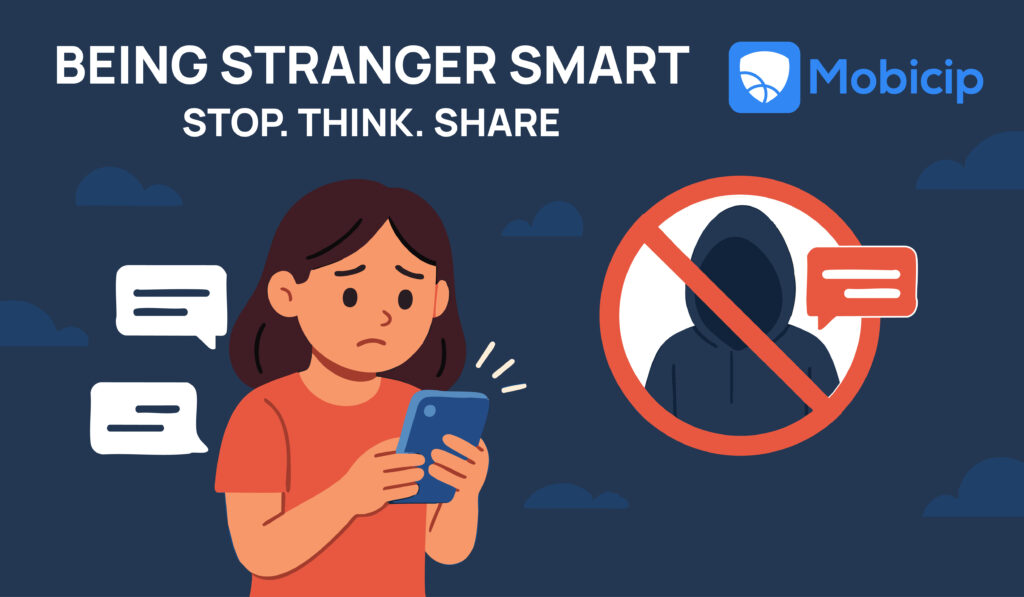How to Teach Your Kids to Spot Misinformation Online: A Practical Guide for Parents
Why Kids Fall for Misinformation Online
Imagine if we, as adults, can so easily get caught in the web of online misinformation. How much more susceptible are kids to falling into its trap? There are several psychological and cognitive factors at play here. Let's dive into some of them to understand why this happens.
-
Information Bias: Much like us grown-ups, children tend to search for information online that aligns with their existing beliefs. If something matches their ideas, they might buy into it, and if it doesn't, they might ignore it. This cognitive bias can lead them into echo chambers where they only hear what they want to hear.
-
Emotional Appeal: Children are highly driven by their emotions. Just think about the rush of adrenaline you get when you stumble upon something sensational online. So, if online content elicits strong emotions in them – be it love, fear, or anger – they may not pause to fact-check. Instead, they might hit the share button or believe it without giving it much thought.
-
Social Influence: Children are greatly influenced by their peers and the social media influencers they follow. If their friends or influencers share dubious information, they might readily accept it without raising any doubts. And let's not forget that classic fear of missing out (FOMO) – they certainly don't want to be left out of the loop.
-
Lack of Discernment: Children are still in the process of developing their critical thinking skills. They might not possess all the mental tools to distinguish between true and false information online. Processing information soundly and making informed decisions comes with experience and learning, something that takes time to develop.
How to Teach Kids to Question Everything Online
C.R.A.P. Detection Test
When your children are surfing the internet, it's essential to encourage their curiosity and skepticism. The CRAP test is a way to evaluate a source based on the following criteria: Currency, Reliability, Authority and Purpose/Point of View. You can apply these questions to test any content's accuracy. Below are some questions to help your children think about measuring each of the criteria.

Currency:
Ask if the information is up to date and relevant.
-
Is the resource up-to-date and suitable for your needs?
-
When was it first published?
-
Has it received updates or revisions since its original publication?
-
Does the time frame of the information align with what you're looking for?
Reliability:
Evaluate the source's reputation and trustworthiness.
-
Can you rely on this information, trusting it to be accurate?
-
Did the author provide evidence and cite sources with references or a list of sources?
-
Is the spelling and grammar correct?
-
Can you verify the information by checking other sources?
Authority:
Determine the qualifications and expertise of the source.
-
Can you have confidence in the source of this information?
-
Who is the author, and what qualifications or credentials do they have?
-
Who is responsible for publishing or sponsoring this information?
-
What does the website's URL end with (.gov, .org, .edu, .com)?
Purpose/Point of View:
Explore the viewpoint and potential biases.
-
What motivates the author to share this resource?
-
Is the author attempting to inform, persuade, sell, or entertain you?
-
Are there advertisements or purchase links, and if so, are they clearly marked as sponsored content?
-
Does the author appear unbiased, or is there evidence of any affiliations or conflicts of interest?
** The C.R.A.P. Test was created by librarian Molly Beestrum at Dominican University and adapted by the LOEX wiki.
For fact-checking, you can rely on resources like:
-
Snopes: A fact-checking website that verifies urban legends and rumors.
-
Wikipedia: An excellent resource for initial research, but it's important to double-check the sources cited.
-
Google: Teach children how to search effectively and find reliable sources.
How to Teach Kids to Spot Fake Social Media Accounts

Since we started using social media, there have been a lot of tricky fake social media accounts pretending to be real people or organizations. They can spread misinformation and deform a child's belief system. But here are some tips and tricks to teach your kids how to tell the real from the fake:
1. Examine Profile Pictures: Ask your child to look closely at the profile picture. If it looks like a generic or stock image rather than a real person, that's a big clue it might be a fake account.
2. Check Follower Count: If a user has only been active for a short time but somehow has a massive following, that's suspicious. Remind your kids to also consider if the account has no followers – it's often a sign of a fake account.
3. Look at the Content: Encourage your child to read the posts. Are they genuine and reflect the thoughts of a real person, or do they just repost sensational or controversial content without any original ideas?
4. Examine Interactions: Have your child check if the account interacts with followers in a genuine way. If the comments seem automated or don't make sense, it could be a fake account.
5. Verification Signs: Teach your kids to look for signs of verification, like the blue checkmark on Facebook or Twitter. These marks indicate that the account is real and trustworthy.
And when it comes to resources and tools, you can use:
-
Privacy settings on social media platforms to restrict who can follow your child and interact with them.
How to Teach Kids to Spot Fake News Articles Online
People share fake news online for different reasons. Some do it to make money, as sensational or false content can attract more clicks and ad revenue. Others have political reasons, trying to manipulate public opinion or create societal problems. Sometimes, it's just about getting attention or feeling important. They share fake stuff to be famous or push their ideas. Here's how you can teach your kids to spot it:
1. Read Beyond the Headline: Explain to your child that a catchy or shocking headline might not tell the whole story. They should always read the full article to understand what's really going on.
2. Check the Author and Source: Teach your child to look for the author's name and the article's source. Real news articles have credible authors with qualifications, contact information, and a history of reliable reporting.
3. Check the Date and Evidence: Show your child how to check the publication date of the article. An outdated article might not reflect the current situation or facts. A real news article should provide sources, data, and quotes to back up what it's saying.
4. Check Emotions and Biases: Explain that fake news often tries to manipulate your feelings or beliefs. If something feels like it's trying to make you emotional or angry, it's a red flag. They should be cautious about sharing such articles without thinking.
Now, let's apply these tips and tricks to different types of fake news articles:
Satire:
-
If the article seems just meant to be funny or entertaining, it's likely satire. It's not real news.
-
Check if there's a clear statement that it's satire, like "This is a joke."
Propaganda:
-
Look for an agenda. Fake news can be created to push a specific point of view.
-
Check if the article is one-sided and doesn't present different perspectives.
Clickbait:
-
If the headline is designed to make you click out of curiosity, but the article doesn't deliver, it's clickbait.
-
Look for articles that promise something amazing but don't provide real information.
Misinformation:
-
If the article makes big claims but doesn't have credible sources or evidence, it's likely misinformation.
-
Check if the information in the article matches what you know to be true.
As for resources and tools, here are some helpful ones:
-
FactCheck.org: A fact-checking website that helps verify the accuracy of news articles.
-
Media Bias/Fact Check: This resource helps you find out if a news source has a bias or if it's reliable.
How to Teach Kids to Spot Fake Images and Videos Online
When kids stumble upon misleading images and videos, it can mess with their heads. They might start getting scared or believing things that just aren't true. Plus, some of these fake visuals can be pretty scary or even show inappropriate content meant for grown-ups, which can give them anxiety. Here's how you can teach your kids to see through the deception:
1. Look for Signs of Editing: Show your child how to spot signs of editing or manipulation. If an image or video has weird things like distortions, strange shapes, or things that don't make sense, it's probably fake.
2. Look for the Original Source: Explain that fake images or videos are often taken out of context. They might be cropped or edited to make them say something different. Kids should look for where the image or video originally came from to understand the real story.
3. Look for Supporting Evidence: Teach your child to check if the image or video matches other sources or records. If it doesn't match what other people or official records say, it's a red flag.
Now, let's apply these tips to different types of fake images and videos:
Deepfakes: Deepfakes use technology to put someone's face or voice onto a different person's body. Look for weird movements or odd-sounding voices.
Photoshopped Images: Look for blurry edges or inconsistent lighting in the image. These might be signs that the image was altered.
Misleading Captions: Encourage your child to read captions carefully. Sometimes, people use fake or exaggerated captions to mislead.
For verifying images and videos, parents can use these helpful resources:
-
Google Reverse Image Search: This tool lets you search for similar images to find the source or similar images from reliable websites.
-
TinEye: Similar to Google's tool, TinEye helps find where an image came from and where it's used.
-
InVID Verification Plugin: This browser extension helps verify videos by checking their source and context.
FAQs
-
How do you explain fake news to a child?
Explaining fake news to a child can be simple. Have an open conversation. You can say, "Fake news is like made-up stories, sort of like fairy tales, but they're on the internet. They're not true, and people make them up to mislead others. So, always ask questions and check if something sounds real or not." It's teaching them to be attentive to the things they consume.
-
How do you teach media literacy to elementary students?
To teach media literacy to elementary students, start with the basics. Show them that not everything on the internet is true. Use real-life examples and ask questions about what they see online. Encourage them to check multiple sources and think critically. Make it a fun adventure of exploring and learning together, so they become responsible tech users.
-
What are some examples of misinformation?
Misinformation can take many forms. For instance, it includes false medical advice or treatments, made-up tales about someone else to defame them, messages promising money or luck if shared, mythical stories presented as fact, artificially manipulated videos or audio recordings, and images. It's crucial to teach kids to recognize such red flags and encourage them to question what they see online.
-
How can parents monitor their child’s online activity?
As parents, you can monitor your child's online activity by setting up parental control apps like Mobicip. These tools help you track what websites your child visits, how much time your child spends online, and even who your child communicates with. Having open conversations about online safety and privacy is essential. Regularly check the device's browser history and consider placing computers in common areas. Building trust and educating your children about responsible internet use is crucial. Always strive to balance keeping your child safe and respecting their independence. To know more, read our blog Why parents should monitor their children






